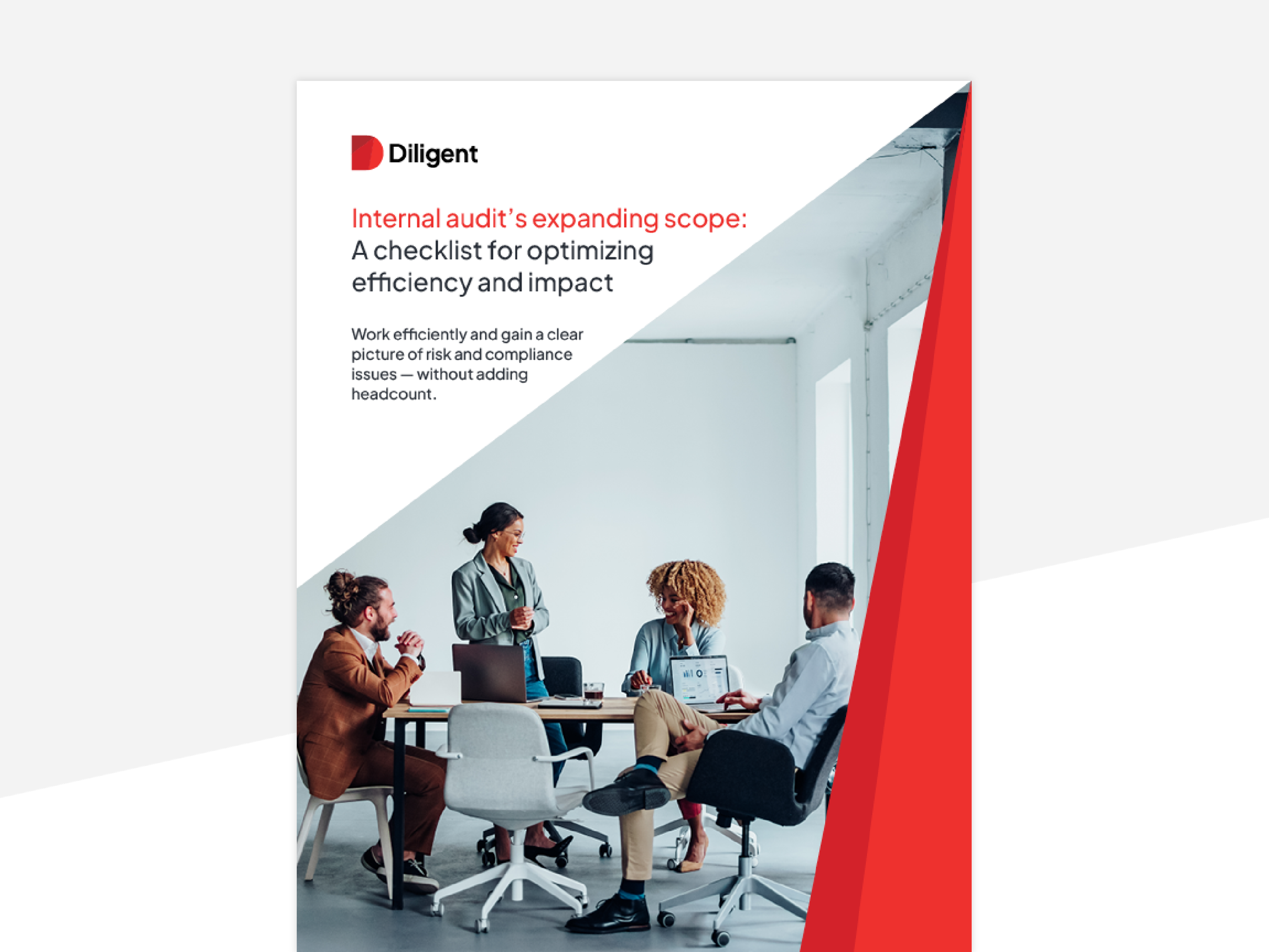How Internal Audit can strengthen cybersecurity through strategic collaboration with InfoSec

Cybersecurity isn’t just an IT problem. For internal auditors, it's a growing pressure point — one they’re expected to weigh in on, even if they don’t hold the technical keys. But with the introduction of the IIA’s new Cybersecurity Topical Requirement, that expectation is becoming an obligation.
So how can audit teams contribute meaningfully to cyber risk oversight when they’re not the ones managing firewalls or scanning for intrusions? The answer lies in something deceptively simple: better collaboration.
Why cybersecurity challenges audit in unique ways
Cybersecurity is different from other enterprise risks. It’s fast-moving, highly technical, and, unlike most risks, you have to get it right every single time. The consequences of failure — financial, reputational, and operational — are often severe.
But for internal auditors, there’s a catch: we don’t own this risk. We’re supposed to provide objective assurance, but when it comes to cybersecurity, it’s hard to give assurance on things you can’t fully see or don’t fully understand. And that creates a knowledge and visibility gap that many audit teams struggle to close.
To help address this, the Institute of Internal Auditors has introduced a Cybersecurity Topical Requirement, which will become mandatory in 2026. It doesn't prescribe how to audit cybersecurity in detail — instead, it sets a baseline. It ensures that when internal audit says “we’ve audited cybersecurity,” that actually means something.
At a high level, the requirement asks auditors to:
- Align with an established cybersecurity framework (like NIST or ISO 27001)
- Assess cyber governance, risk management, and controls
- Document how they’ve approached each of these areas
Most functions are already doing parts of this — but documentation and consistency are where many fall short. That’s where the opportunity lies.
What stronger Audit–InfoSec collaboration looks like
If audit is the third line of defense, the second is usually a combination of IT security, compliance and risk teams. And these relationships can be tense.
In some organizations, InfoSec teams are hesitant to let audit in. They say, “We’re already testing our own controls,” or “We know our systems better than anyone.” While those statements may be true, they miss the point. Independent validation isn’t a challenge to ownership, it’s a safeguard.
And when those walls stay up, real risks get missed. It’s only after a breach that both sides realize just how much they could’ve benefited from tighter coordination.
Audit and InfoSec don’t need to merge roles. But they do need to build trust, align on goals, and communicate regularly, not just after something goes wrong. High-performing audit teams are starting to shift left — getting involved earlier in the process, not just showing up after the incident or implementation.
This doesn’t mean taking over InfoSec’s job. It means:
- Participating in vendor risk evaluations
- Observing security governance meetings
- Advising on control design during system changes
- Sharing threat and control monitoring data in near-real time
This kind of partnership pays off. Not only does it improve cyber resilience, but it also gives internal audit more credibility with stakeholders — and a seat at the table in cyber discussions.
The right technology can bridge the gap
One of the biggest barriers between audit and InfoSec isn’t mindset, it’s infrastructure. These teams often work in different systems, with different data, using different terminology. That fragmentation slows everything down: risk identification, reporting, response and trust-building.
Technology isn’t a silver bullet, but it’s a powerful enabler. When audit and InfoSec can access the same risk data, track issues through shared dashboards, and automate low-level work, two big things happen:
- Collaboration gets easier.
- Everyone spends more time on high-value analysis instead of chasing information.
What to look for in enabling technology:
- Unified GRC platforms that bring audit, risk, and InfoSec into a single environment
- Automated control testing and continuous monitoring — especially for cyber-related controls
- Shared risk libraries and common frameworks (like NIST or ISO 27001) baked into workflows
- Real-time dashboards that surface issues before they escalate
- Role-based access and traceability so teams can collaborate without losing independence
For auditors, these tools help close the knowledge gap. You don’t need to be a security engineer to understand risk posture when analytics, audit plans and control testing are integrated. And for InfoSec, working alongside audit no longer feels like an extra burden — it’s part of a coordinated effort.
The right tooling also supports growing expectations around documentation and defensibility. If your audit team needs to demonstrate alignment with the IIA’s Cybersecurity Topical Requirement, having a system that tracks activities, links evidence and maps to frameworks makes that achievable.
Final thought: Audit's role in cyber strategy Is growing
Internal audit doesn’t need to become technical experts in penetration testing or endpoint detection. But they do need to understand the risk well enough to ask the right questions — and spot when something doesn’t add up.
That means:
- Advising, not just assuring
- Upskilling, or partnering with subject matter experts
- Investing in tools that close the visibility gap
The most effective audit leaders aren’t just checking boxes. They’re helping shape how their organizations invest in cyber controls and measure their maturity. And they’re doing it in partnership with InfoSec — not in isolation from it.
Cybersecurity is evolving fast, and so is internal audit. The gap between the two is no longer just a missed opportunity, it’s a liability. But with the right relationships, frameworks, and tools, audit can play a critical role in keeping organizations secure, compliant and resilient.
Explore how the right tools can help internal audit teams work smarter, close risk gaps faster, and prepare for evolving standards like the IIA’s Cybersecurity Topical Requirement.
More to explore

Internal audit’s expanding scope: A checklist
Download now to see how your audit team can achieve next-level efficiency and strategic insight.

Connecting cybersecurity, audit, and the board
Jeff Barnett, Senior Director of Strategic Alliances at Bitsight, shares insights from a recent report published by Diligent Institute and Bitsight.

Using technology for enhanced audit efficiency and strategic insight
By integrating technology and adopting a strategic mindset, audit can move beyond a compliance role to become a trusted advisor.